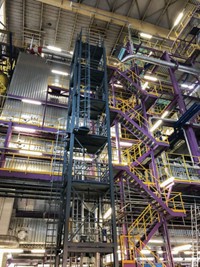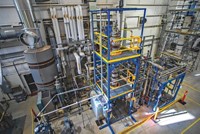Advertisement
Grab your lab coat. Let's get started
Welcome!
Welcome!
Create an account below to get 6 C&EN articles per month, receive newsletters and more - all free.
It seems this is your first time logging in online. Please enter the following information to continue.
As an ACS member you automatically get access to this site. All we need is few more details to create your reading experience.
Not you? Sign in with a different account.
Not you? Sign in with a different account.
ERROR 1
ERROR 1
ERROR 2
ERROR 2
ERROR 2
ERROR 2
ERROR 2
Password and Confirm password must match.
If you have an ACS member number, please enter it here so we can link this account to your membership. (optional)
ERROR 2
ACS values your privacy. By submitting your information, you are gaining access to C&EN and subscribing to our weekly newsletter. We use the information you provide to make your reading experience better, and we will never sell your data to third party members.
Greenhouse Gases
Cement makers advance carbon capture
Lafarge and Heidelberg select technologies for CO2 capture and utilization projects
by Craig Bettenhausen
May 25, 2023
| A version of this story appeared in
Volume 101, Issue 17

Two construction-material firms have selected technology partners for facilities that will capture and use some of the carbon dioxide generated at their cement plants.
In British Columbia, Lafarge is adding a CO2-to-chemicals system from the start-up Dimensional Energy to CO2-capture pilot equipment from Svante that has operated at its Richmond Cement Plant since January 2021. Svante captures CO2 with solid sorbents based on metal-organic frameworks. When completed, the system will pull 1 metric ton (t) of CO2 per day from Lafarge’s cement facility and react it with hydrogen to yield roughly 180 L of hydrocarbon waxes.
Lafarge says a local means of CO2 utilization is critical for decarbonizing heavy industry in British Columbia because the province doesn’t have the transportation and sequestration infrastructure to otherwise store the greenhouse gas.
“Carbon capture is an important lever in our net-zero roadmap. However, for a carbon capture project to succeed, it must be paired with permanent geologic sequestration or utilization technology that will permanently isolate the CO2 in a specific media or product,” Stephanie Voysey, head of sustainability and environment for Lafarge in Western Canada, says in a statement.
Separately, Heidelberg Materials has selected BASF’s OASE blue carbon-capture process for its cement plant in Lengfurt, Germany. Heidelberg, BASF, and the industrial gas firm Linde collaborated to adapt BASF’s aqueous amine CO2-scrubbing solvent to cement-plant emissions. Heidelberg and Linde have formed a joint venture, Capture-to-Use, to build and operate the facility, which will capture 70,000 t of CO2 per year. Linde will then sell the gas for industrial use.
Heidelberg and BASF call Lengfurt the world’s first industrial-scale carbon capture and utilization project. Still, it will capture less than 10% of the cement plant’s CO2 emissions. Lengfurt makes 1 million t of cement per year, according to the periodical Global Cement. Life-cycle analysis expert Raoul Meys says 0.88 kg of CO2 are typically emitted for every kilogram of cement made, making Lengfurt’s total CO2 emissions roughly 880,000 t per year.




Join the conversation
Contact the reporter
Submit a Letter to the Editor for publication
Engage with us on Twitter